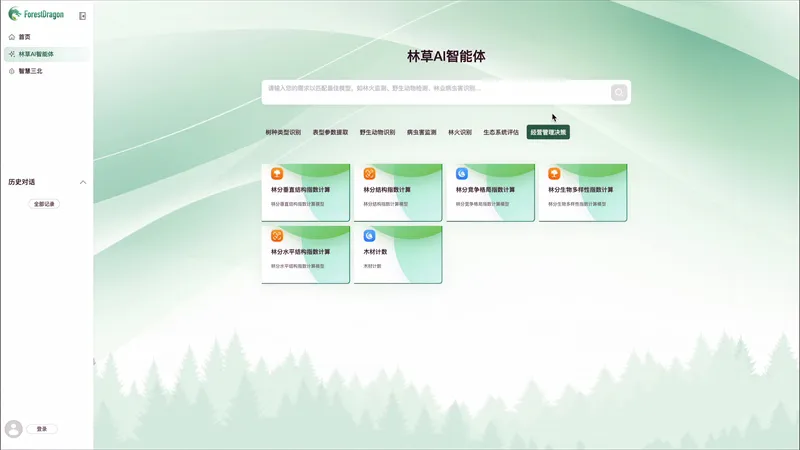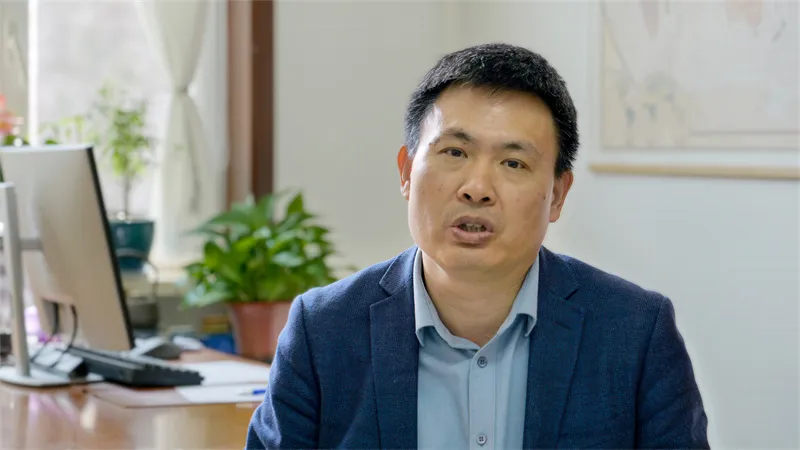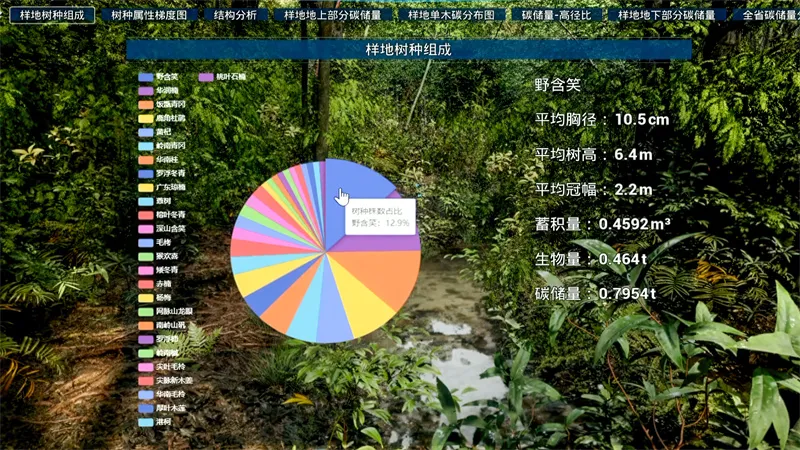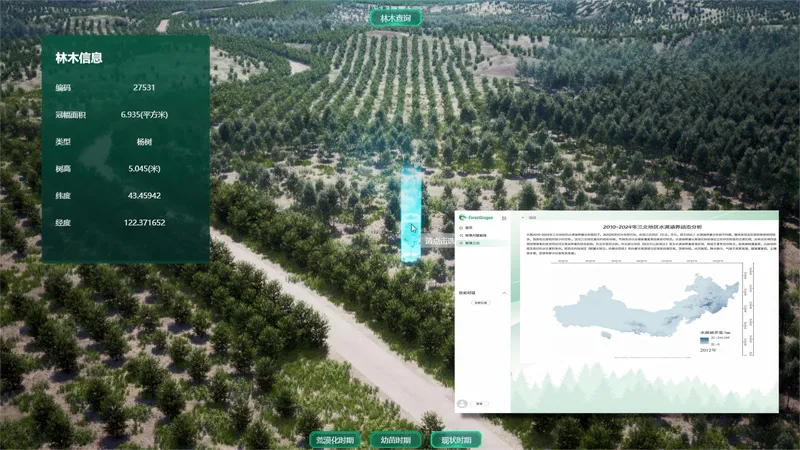Industry News | Detailed Explanation of China's First Forest and Grass Industry Model "Linlong Model"
Recently, the Resource Information Research Institute of the Chinese Academy of Forestry successfully developed China's first large-scale model for the forestry and grassland industry, the "Linlong Large Model," marking a new stage in the construction of "smart forestry and grassland" in China.
With the rapid development of technology, artificial intelligence (AI) is penetrating into various fields at an unprecedented speed. Large models represented by DeepSeek, with their efficient reasoning, multimodal fusion, and deep optimization of vertical fields, are like a magical key, opening a new era of intelligent transformation and upgrading in the industry. The forestry and grassland industry has the characteristics of vast territory, complex types, and high work difficulty. It urgently needs deep integration and innovative empowerment of artificial intelligence technology represented by industry models to improve the information management level of the forestry and grassland industry and promote precise improvement of forestry and grassland quality.

According to researcher Zhang Huaiqing, the head of the R&D team and chief scientist of the Chinese Academy of Forestry, the Linlong Large Model has five outstanding advantages:
(1) Through the use of industry text knowledge multi-agent technology and the integration of knowledge in the field of forestry and grassland, the shortcomings of general large-scale models in understanding forestry and grassland industry knowledge have been overcome, resulting in an improvement of over 60% in the understanding ability of large-scale models for complex problems in the forestry and grassland field.
(2) Based on the data and business characteristics of the forestry and grassland industry, a spatiotemporal large model of multimodal data for forestry and grassland has been constructed, breaking through the shortcomings of big language models in understanding, analyzing, and reasoning about spatiotemporal data. The calculation and processing capabilities of forestry and grassland business have been improved by more than 50%.
(3) The collaborative fusion of multimodal large models and specialized small models has been achieved, greatly reducing development costs, significantly improving the reusability, applicability, and universality of the models, and increasing development and utilization efficiency by more than 10 times.
(4) Solved the problem of multi terminal compatibility and localization adaptation in the field of forestry and grassland under low resource conditions, overcame the dependence of large-scale models in the forestry and grassland industry on high computing power, and improved the usability and inclusiveness of the models.
(5) It has achieved open sharing of independent property rights in the industry, with high scalability, and supports functional updates, iterations, and continuous product improvement.

The Linlong big model has been implemented in 8 major application scenarios, supporting interface calls from various terminals, and will continue to expand and improve to support scientific research, application, and industrial development in the vertical fields of smart forestry and grass industry.
(1) Industry text processing: Developing multi-agent systems for forest and grass industry text knowledge, reducing model understanding bias, and improving professional knowledge acquisition efficiency and inference accuracy by nearly 10 times.
(2) Tree species type recognition: Using a collaborative computing architecture that integrates size models, precise identification of tree species from multiple remote sensing images is achieved with an accuracy rate of over 93%.
(3) Phenotype parameter extraction: Using multidimensional data such as 3D point clouds, multispectral, hyperspectral, etc., accurate extraction of multi-scale tree phenotype parameters from plot single tree organ, as well as precise identification of forest fruit varieties, maturity, quality and other phenotypes, with an accuracy rate of over 90%.
(4) Wildlife recognition: Through the fusion of multimodal data such as images, videos, and voiceprints, precise recognition of wildlife types, quantities, postures, and behaviors is achieved with an accuracy of over 91%.
(5) Disease and pest monitoring: By fine-tuning the SAM model, the health status of trees can be monitored, such as identifying diseases like pine wilt, with an accuracy of over 90%.
(6) Forest fire recognition: Using fine tuned Grounding DINO large models to achieve intelligent recognition of forest fires, smoke and other disasters in complex backgrounds, with an accuracy of over 92%.
(7) Ecosystem assessment: Through adaptive data intelligent mining algorithms, precise extraction of key ecological parameters such as NDVI, NDWI, LAI, litter yield, water production, soil retention capacity, net primary productivity, and total primary productivity is achieved with an accuracy of over 85%.
(8) Business management decision-making: By utilizing digital twin intelligent simulation and decision-making algorithms, precise extraction and structural optimization adjustment of forest spatial structure heterogeneity, forest competition degree, tree species mixing degree, and forest spatial structure information can be achieved, resulting in a more than 5-fold increase in decision-making efficiency.

The Linlong model has been applied in the "Three North" project demonstration zone and runs stably and reliably. The Linlong Large Model will gradually optimize, upgrade, and iteratively update, deepen its integration with the forestry and grassland industry, comprehensively promote the intelligent transformation of forestry and grassland and the innovative application of AI industry, and empower a new chapter in the development of smart forestry and grassland.
Article source: Reprinted from China Geographic Information Industry Association